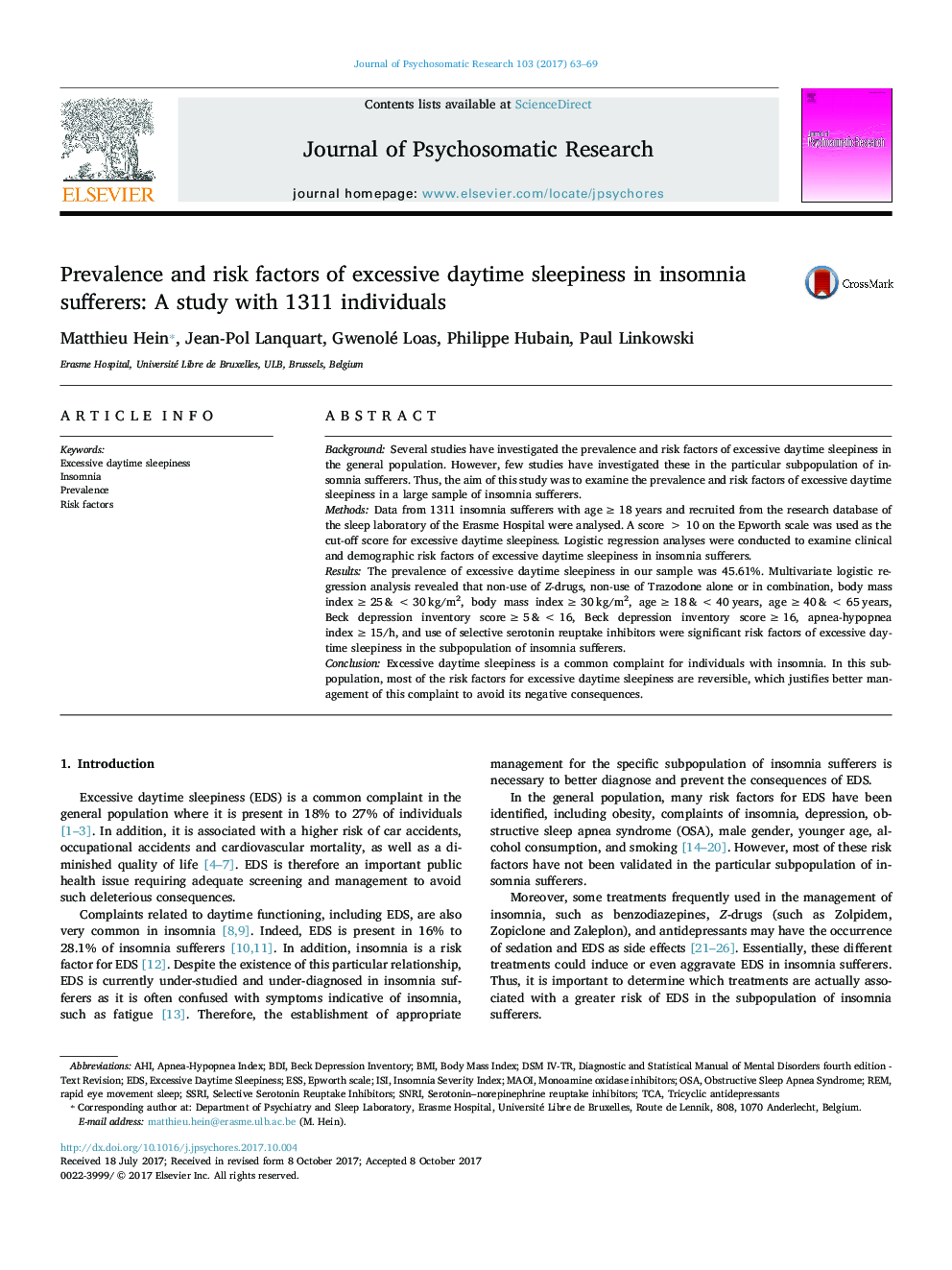| کد مقاله | کد نشریه | سال انتشار | مقاله انگلیسی | نسخه تمام متن |
|---|---|---|---|---|
| 5045771 | 1475892 | 2017 | 7 صفحه PDF | دانلود رایگان |
- The prevalence of excessive daytime sleepiness in insomnia sufferers is 45.61%.
- Most of highlighted risk factors for excessive daytime sleepiness are reversible in the subpopulation of insomnia sufferers.
- These risk factors open up a new perspective for more effective screening of excessive daytime sleepiness in insomnia.
BackgroundSeveral studies have investigated the prevalence and risk factors of excessive daytime sleepiness in the general population. However, few studies have investigated these in the particular subpopulation of insomnia sufferers. Thus, the aim of this study was to examine the prevalence and risk factors of excessive daytime sleepiness in a large sample of insomnia sufferers.MethodsData from 1311 insomnia sufferers with age â¥Â 18 years and recruited from the research database of the sleep laboratory of the Erasme Hospital were analysed. A score > 10 on the Epworth scale was used as the cut-off score for excessive daytime sleepiness. Logistic regression analyses were conducted to examine clinical and demographic risk factors of excessive daytime sleepiness in insomnia sufferers.ResultsThe prevalence of excessive daytime sleepiness in our sample was 45.61%. Multivariate logistic regression analysis revealed that non-use of Z-drugs, non-use of Trazodone alone or in combination, body mass index â¥Â 25 & < 30 kg/m2, body mass index â¥Â 30 kg/m2, age â¥Â 18 & < 40 years, age â¥Â 40 & < 65 years, Beck depression inventory score â¥Â 5 & < 16, Beck depression inventory score â¥Â 16, apnea-hypopnea index â¥Â 15/h, and use of selective serotonin reuptake inhibitors were significant risk factors of excessive daytime sleepiness in the subpopulation of insomnia sufferers.ConclusionExcessive daytime sleepiness is a common complaint for individuals with insomnia. In this subpopulation, most of the risk factors for excessive daytime sleepiness are reversible, which justifies better management of this complaint to avoid its negative consequences.
Journal: Journal of Psychosomatic Research - Volume 103, December 2017, Pages 63-69
